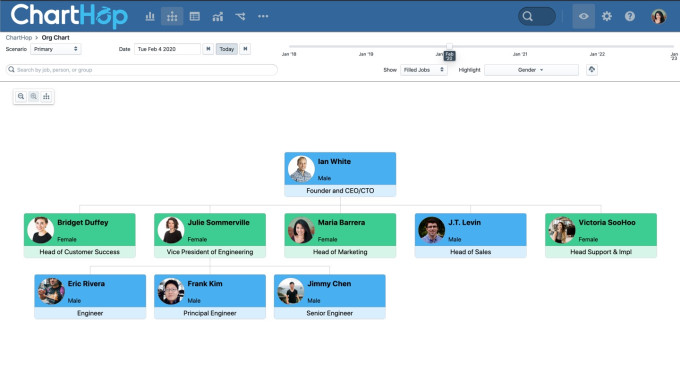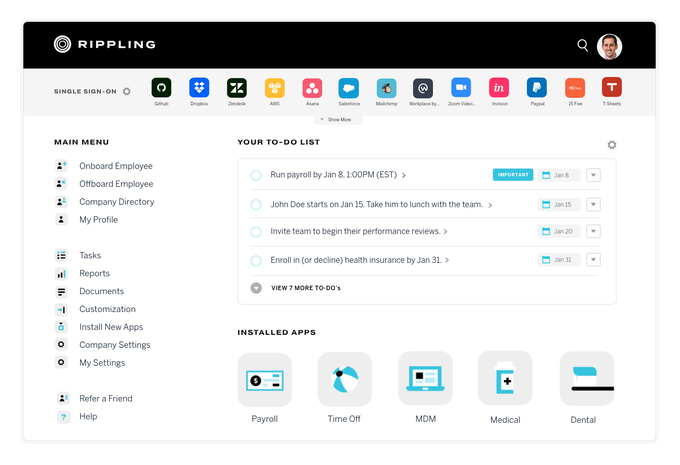As cybercrime continues to evolve and expand, a startup that is building a business focused on endpoint security has raised a big round of funding. SentinelOne — which provides a machine learning-based solution for monitoring and securing laptops, phones, containerised applications and the many other devices and services connected to a network — has picked up $200 million, a Series E round of funding that it says catapults its valuation to $1.1 billion.
The funding is notable not just for its size but for its velocity: it comes just eight months after SentinelOne announced a Series D of $120 million, which at the time valued the company around $500 million. In other words, the company has more than doubled its valuation in less than a year — a sign of the cybersecurity times.
This latest round is being led by Insight Partners, with Tiger Global Management, Qualcomm Ventures LLC, Vista Public Strategies of Vista Equity Partners, Third Point Ventures and other undisclosed previous investors all participating.
Tomer Weingarten, CEO and co-founder of the company, said in an interview that while this round gives SentinelOne the flexibility to remain in “startup” mode (privately funded) for some time — especially since it came so quickly on the heels of the previous large round — an IPO “would be the next logical step” for the company. “But we’re not in any rush,” he added. “We have one to two years of growth left as a private company.”
While cybercrime is proving to be a very expensive business (or very lucrative, I guess, depending on which side of the equation you sit on), it has also meant that the market for cybersecurity has significantly expanded.
Endpoint security, the area where SentinelOne concentrates its efforts, last year was estimated to be around an $8 billion market, and analysts project that it could be worth as much as $18.4 billion by 2024.
Driving it is the single biggest trend that has changed the world of work in the last decade. Everyone — whether a road warrior or a desk-based administrator or strategist, a contractor or full-time employee, a front-line sales assistant or back-end engineer or executive — is now connected to the company network, often with more than one device. And that’s before you consider the various other “endpoints” that might be connected to a network, including machines, containers and more. The result is a spaghetti of a problem. One survey from LogMeIn, disconcertingly, even found that some 30% of IT managers couldn’t identify just how many endpoints they managed.
“The proliferation of devices and the expanding network are the biggest issues today,” said Weingarten. “The landscape is expanding and it is getting very hard to monitor not just what your network looks like but what your attackers are looking for.”
This is where an AI-based solution like SentinelOne’s comes into play. The company has roots in the Israeli cyberintelligence community but is based out of Mountain View, and its platform is built around the idea of working automatically not just to detect endpoints and their vulnerabilities, but to apply behavioral models, and various modes of protection, detection and response in one go — in a product that it calls its Singularity Platform that works across the entire edge of the network.
“We are seeing more automated and real-time attacks that themselves are using more machine learning,” Weingarten said. “That translates to the fact that you need defence that moves in real time as with as much automation as possible.”
SentinelOne is by no means the only company working in the space of endpoint protection. Others in the space include Microsoft, CrowdStrike, Kaspersky, McAfee, Symantec and many others.
But nonetheless, its product has seen strong uptake to date. It currently has some 3,500 customers, including three of the biggest companies in the world, and “hundreds” from the global 2,000 enterprises, with what it says has been 113% year-on-year new bookings growth, revenue growth of 104% year-on-year and 150% growth year-on-year in transactions over $2 million. It has 500 employees today and plans to hire up to 700 by the end of this year.
One of the key differentiators is the focus on using AI, and using it at scale to help mitigate an increasingly complex threat landscape, to take endpoint security to the next level.
“Competition in the endpoint market has cleared with a select few exhibiting the necessary vision and technology to flourish in an increasingly volatile threat landscape,” said Teddie Wardi, managing director of Insight Partners, in a statement. “As evidenced by our ongoing financial commitment to SentinelOne along with the resources of Insight Onsite, our business strategy and ScaleUp division, we are confident that SentinelOne has an enormous opportunity to be a market leader in the cybersecurity space.”
Weingarten said that SentinelOne “gets approached every year” to be acquired, although he didn’t name any names. Nevertheless, that also points to the bigger consolidation trend that will be interesting to watch as the company grows. SentinelOne has never made an acquisition to date, but it’s hard to ignore that, as the company to expand its products and features, that it might tap into the wider market to bring in other kinds of technology into its stack.
“There are definitely a lot of security companies out there,” Weingarten noted. “Those that serve a very specific market are the targets for consolidation.”

![]()






